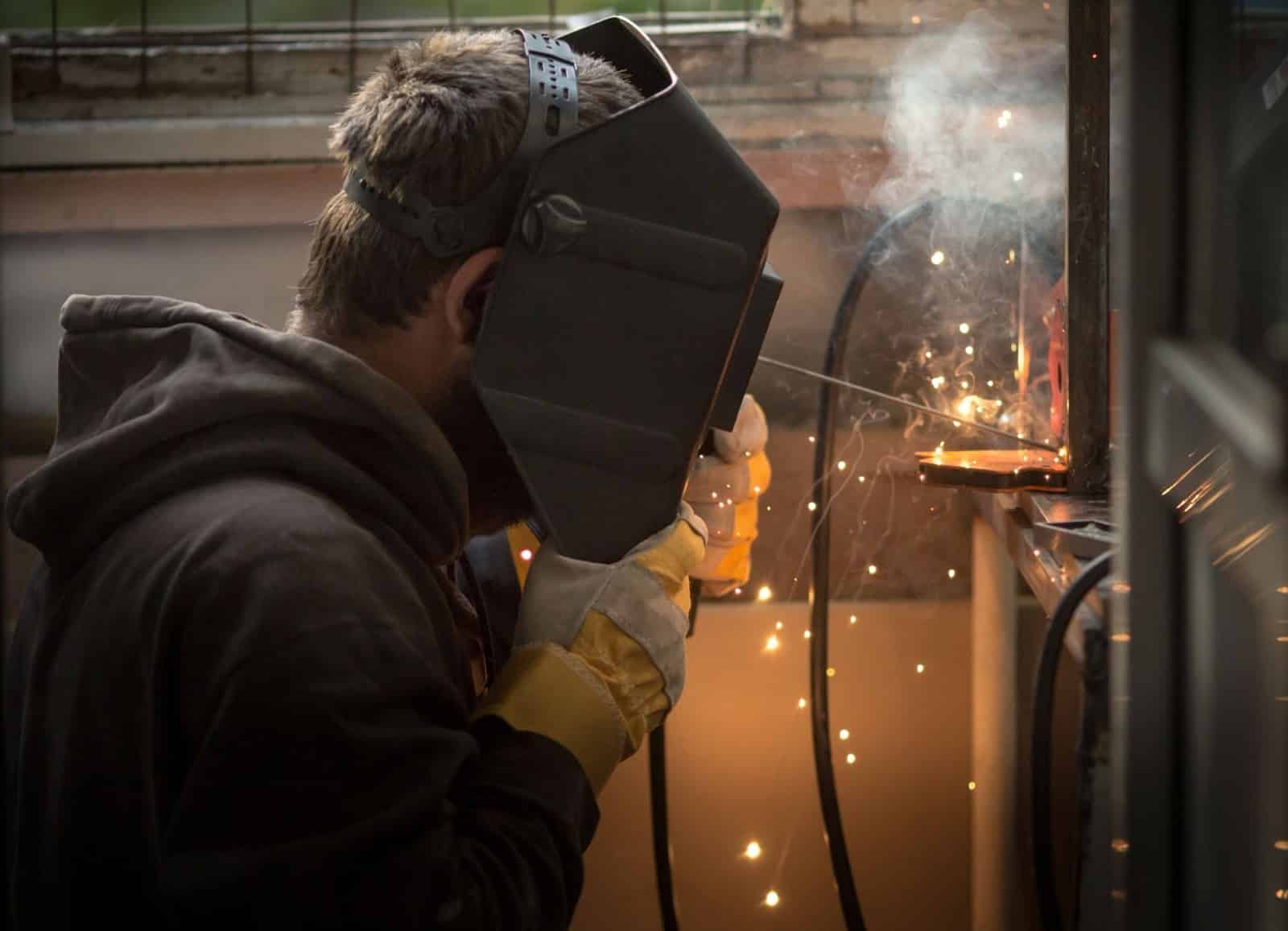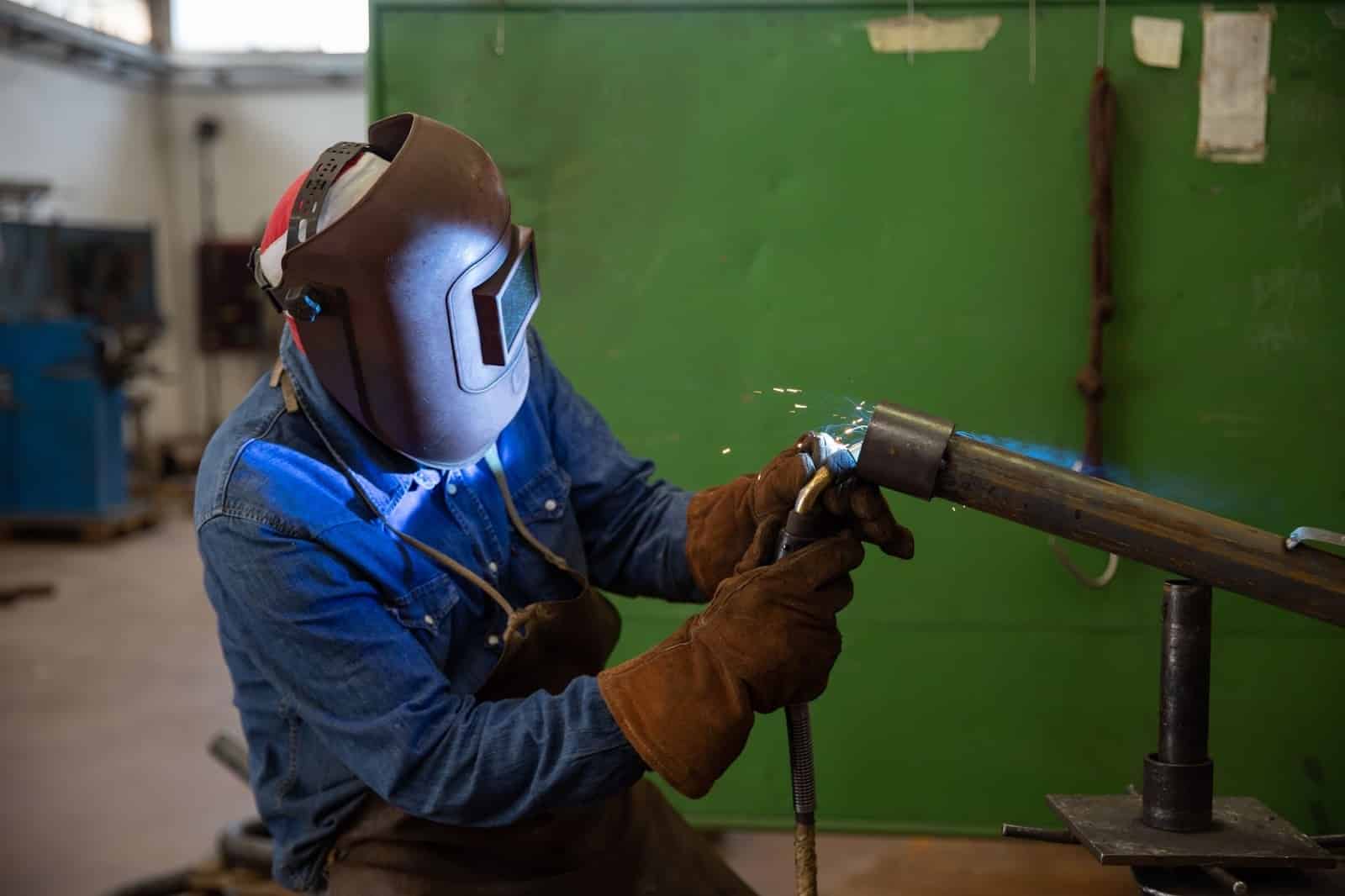304 stainless steel is incredibly common. You see it in restaurants, food-processing lines, handrails, marine hardware, and brewery tanks.
It’s durable, rust-resistant, and easy to form. And yes, it welds well too, but only if you control the heat and avoid contamination.
In this guide, you’ll learn the best welding methods, recommended fillers, gas choices, heat-control tricks, and the exact steps you can follow to get clean, food-grade, and corrosion-resistant welds every time.
What Is 304 Stainless Steel?

304 stainless steel is an 18/8 austenitic alloy made with roughly 18% chromium and 8% nickel.
These two elements give it the corrosion resistance and toughness everyone loves.
You’ll find 304 in:
- Food service equipment
- Brewery tanks and sanitary tubes
- Architectural railings
- Appliances
- Marine and chemical processing parts
It’s popular because it forms easily, stays strong under heat, and resists rust better than mild steel.
Is 304 Stainless Steel Easy to Weld?
Yes, 304 is one of the most weldable stainless steels. However, it comes with important considerations:
- It retains heat longer.
- It can warp or distort more easily.
- Excessive heat may cause carbide precipitation (sensitization).
- Contamination can cause rust.
With the right filler metal, shielding gas, and technique, you can achieve clean, strong, corrosion-resistant welds.
Best Welding Processes for 304 Stainless Steel
Different welding methods can be used on 304, depending on application, thickness, and desired weld appearance.
1. TIG Welding (GTAW) – For the highest-quality welds
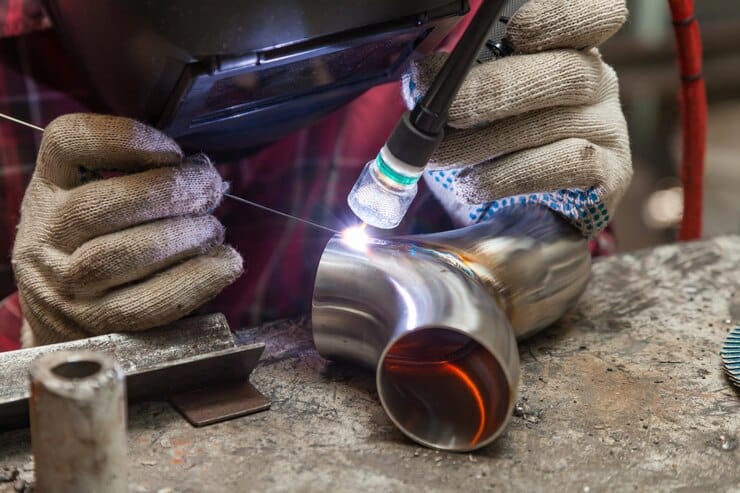
TIG is the preferred method when aesthetic appearance and precision matter.
Why TIG works well:
- Great control over heat
- Clean, spatter-free welds
- Perfect for thin materials
- Ideal for sanitary and food-grade welds
Typical TIG setup for 304:
| Item | Recommendation |
| Polarity | DCEN |
| Tungsten | 2% thoriated / ceriated / lanthanated |
| Tungsten Size | 1/16″–3/32″ |
| Gas | 100% argon |
| Add-ons | Gas lens for better coverage |
2. MIG Welding (GMAW) – For speed and productivity
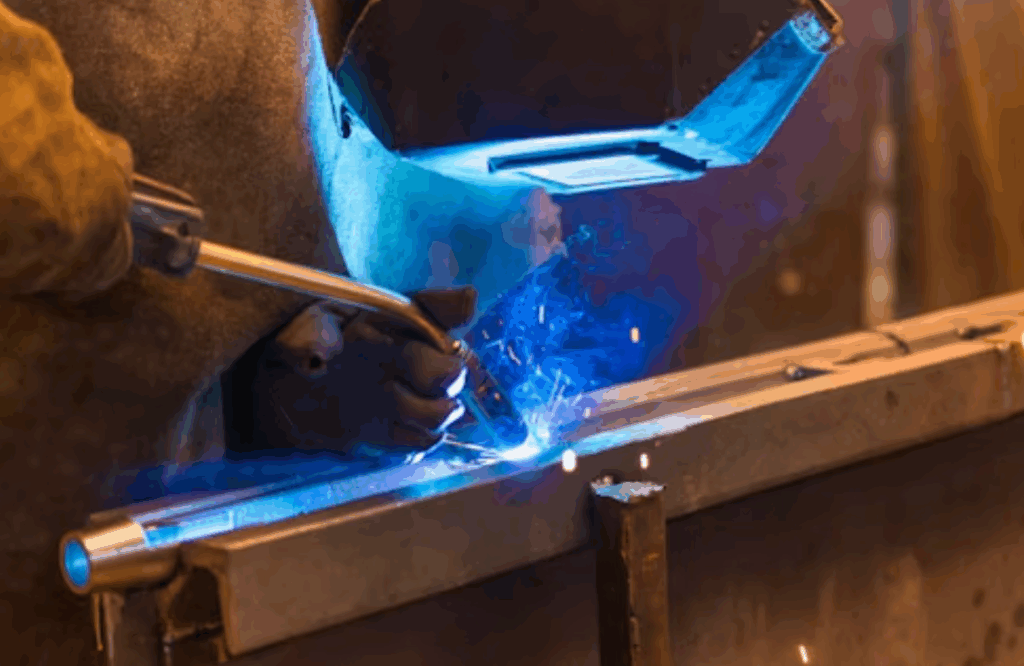
MIG welding (GMAW) is the better option when you need speed, deeper penetration, or you’re working with thicker stainless steel.
Shielding Gas Choices:
- 98% Argon / 2% Oxygen – best bead appearance
- 98% Argon / 2% CO₂ – better penetration, slightly more oxidation
- Tri-mix gas (Helium + Argon + CO₂) for short-arc welding
Common wire diameters:0.030″,0.035″,0.045″
MIG is popular for:
- Tanks and vessels
- Frames and brackets
- General stainless fabrication
3. Stick Welding (SMAW) – For outdoor or heavy-duty repairs
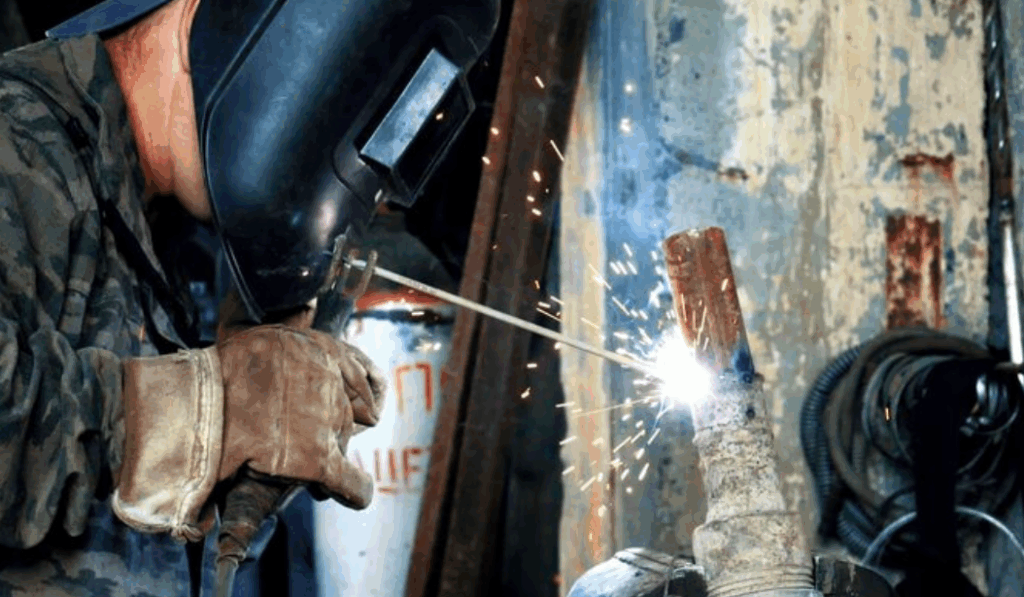
Stick welding (SMAW) is the practical choice for outdoor work or repair jobs where wind makes gas shielding difficult.
Best electrodes for 304:
- E308L-16
- E308L-17
These rods maintain corrosion resistance and handle less-than-perfect prep better than TIG or MIG.
What Filler Metal Should You Use for 304 Stainless Steel?
Use ER308L or ER308LSi for 304 stainless steel.
Both match the base metal chemistry and maintain corrosion resistance.
| Filler | Best Use |
| ER308L | General welding, low-carbon for corrosion resistance |
| ER308LSi | Better wetting, smoother beads, ideal for MIG/TIG appearance |
| E308L Rods | Stick welding |
The “L” stands for low carbon, which prevents carbide precipitation and keeps the weld corrosion-resistant.
What Shielding Gas Is Best for Welding 304 Stainless Steel?
Shielding gas affects bead quality, penetration, and spatter.
TIG Shielding Gas:
- Pure Argon (most common)
- Argon/Helium mix for thicker material
MIG Shielding Gas:
- 98% Argon / 2% Oxygen
- 98% Argon / 2% CO₂
- Tri-mix: 90% Helium / 7.5% Argon / 2.5% CO₂ (for spray transfer or short arc)
Stick Welding:
- No gas required, flux coating produces shielding
Challenges When Welding 304 Stainless Steel
Stainless steels behave differently than carbon steel. Knowing the potential problems helps you avoid them.
1. Warping and Distortion
304 retains heat longer and expands more than carbon steel.
How to prevent warping:
- Use lower heat input
- Stitch weld or skip weld
- Use copper backing bars
- Clamp securely
- Allow cooling between passes
2. Carbide Precipitation (Sensitization)
Occurs when chromium carbides form at 800–1500°F, reducing corrosion resistance.
Prevent sensitization by:
- Using “L” grade fillers
- Controlling heat input
- Maintaining proper shielding gas coverage
3. Contamination
Contaminants can cause rust, even on stainless steel.
Avoid:
- Carbon steel brushes or tools
- Grinding disks used on mild steel
- Oil, grease, or fingerprints
- Poor gas coverage
Use only stainless-dedicated tools.
4. Porosity
Caused by trapped gases in the weld pool.
Fix it by:
- Increasing gas coverage
- Reducing drafts
- Cleaning the metal
- Using the right gas flow (typically 20–30 CFH)
How Should You Prepare 304 Stainless Steel Before Welding?
Proper preparation ensures clean, corrosion-free welds.
1. Clean the Surface Thoroughly
- Remove dirt, oil, and paint
- Use acetone or stainless-safe solvents
- Brush only with stainless steel brushes
2. Fit-up and Joint Preparation
- Use precise joint gaps
- Bevel-thick materials
- Support thin materials to prevent distortion
3. Ensure Proper Gas Flow
- Avoid excessive flow (causes turbulence)
- Use gas diffusers or gas lenses
4. Keep Heat Input Low
- High heat burns chromium
- Causes discoloration (straw, blue, purple colors)
- Weakens corrosion resistance
Ideally:
Use pulsed TIG or MIG to maintain strength without overheating.
Why Does Stainless Weld Discolor and How Do You Clean It?
Discoloration is normal but undesirable in critical applications like food or medical equipment.
Color legend:
- Straw/yellow = minor oxidation
- Blue/purple = moderate heat
- Black/sooty = poor shielding
How to remove weld discoloration:
- Stainless steel wire brushing
- Pickling paste
- Electrochemical weld cleaning
Cleaning restores corrosion resistance and appearance.
What Joints Work Best for 304 Stainless Steel?
1. Butt Joint – for pipes, tanks, and structural parts
Ensures full penetration and strength.
2. Lap Joint – for sheet metal repairs
Useful when joining different thicknesses.
3. T-Joint/Fillet Joint
Common in frames, brackets, and general fabrication.
4. Corner Joint
Used in enclosures, boxes, and stainless frames.
Where Are 304 Stainless Steel Welds Used?
Because of its corrosion resistance, welded 304 is widely used in:
- Food industry equipment
- Kitchen appliances
- Storage tanks
- Medical devices
- Architectural railings
- Exhaust systems
- Marine hardware
- Breweries and distilleries
- Chemical process lines
From breweries to skyscrapers, 304 is everywhere welded.
Pro Tips for Perfect 304 Stainless Steel Welds
- Use low heat and moderate travel speed.
- Always use “L” grade filler metals.
- Prevent contamination by using stainless-only tools.
- Ensure full gas coverage before and after striking the arc.
- Back purge stainless pipes to avoid sugar (oxidation).
- Clean the weld area immediately after welding.
- Use pulse mode to reduce heat buildup and discoloration.
Conclusion: How Do You Get the Best Stainless Steel Welds?
Welding 304 stainless steel is straightforward when you understand its characteristics and requirements.
Whether you’re TIG welding thin sanitary tubing or MIG welding heavy structural components, success comes from:
- Choosing the right filler metal
- Using proper shielding gas
- Managing heat input
- Preventing contamination
- Cleaning and passivating the final weld
With the right technique, equipment, and preparation, you can produce clean, strong, and corrosion-resistant welds that perform flawlessly in demanding environments.
FAQ: Additional Questions About Welding 304 Stainless Steel
Most stainless steels can be welded, but 303 and 416 are the most difficult. They contain sulfur that helps machinability but causes the weld to crack. Martensitic grades like 420 and 440C are weldable with preheat and post-weld tempering, but they are far less forgiving than 304.
You can MIG weld stainless, but many people think you can’t because it requires the right wire and shielding gas. With ER308L or ER309L wire and a proper gas blend (98/2 or tri-mix), MIG stainless welds are strong and clean. Poor gas or technique is usually what causes issues, not the process itself.
Yes, 308 wire is made for welding 304 stainless steel. ER308L and ER308LSi match the alloy chemistry and maintain the corrosion resistance that 304 is known for.
You can weld 304 stainless using TIG, MIG, or Stick depending on the job. TIG gives the cleanest, food-grade appearance. MIG is the fastest for fabrication work. Stick is the most practical outdoors or on repairs where shielding gas is hard to control.
For Stick welding, use E308L-16 or E308L-17 rods. They match the chromium-nickel composition of 304 and help maintain corrosion resistance after the weld cools.

